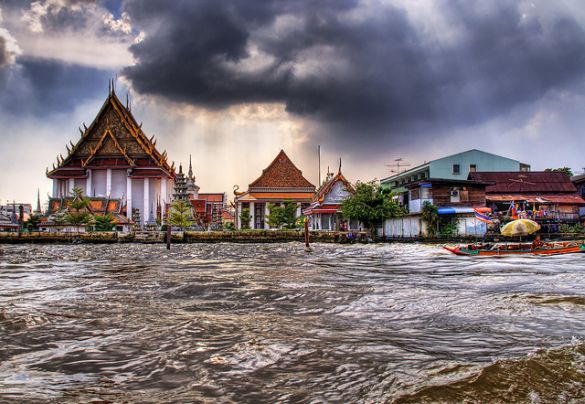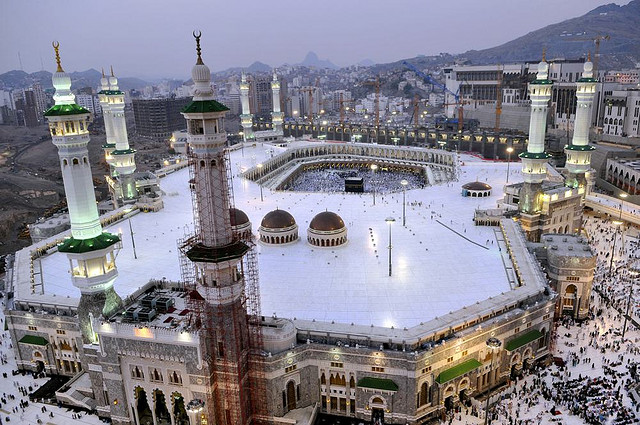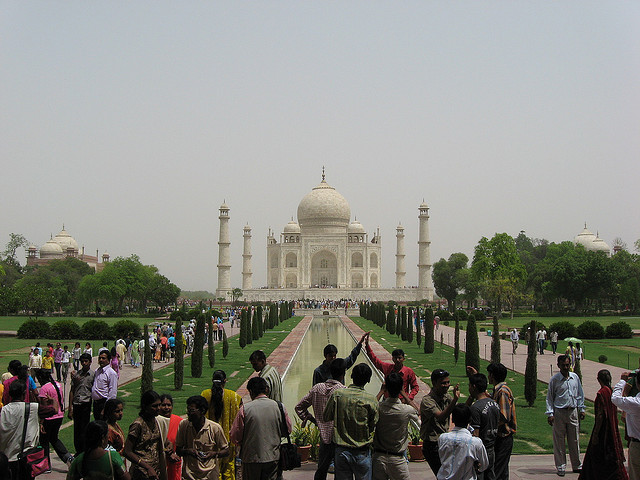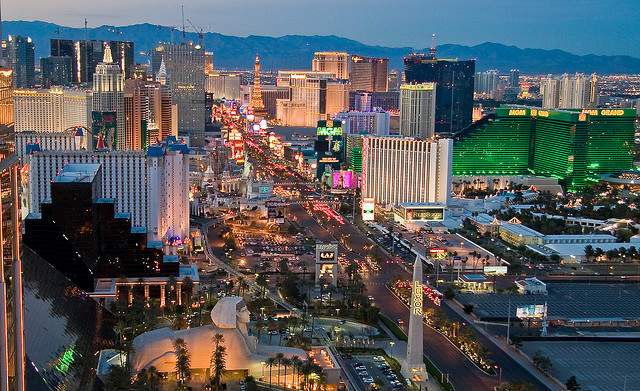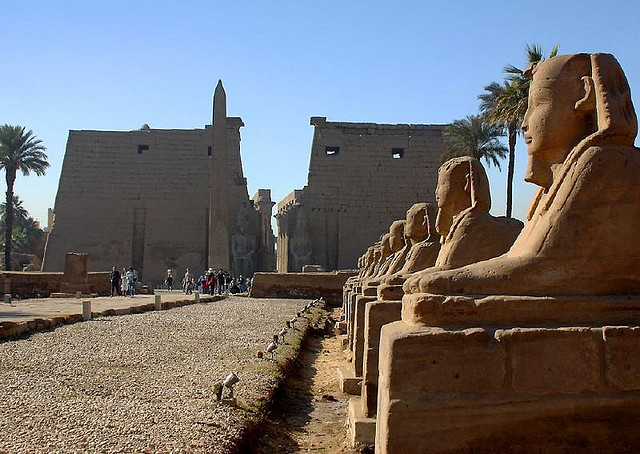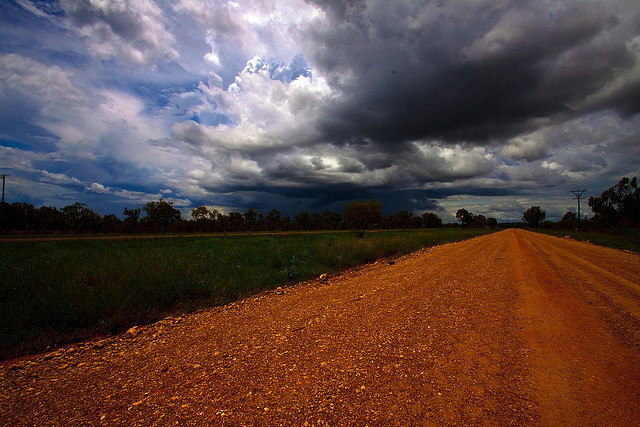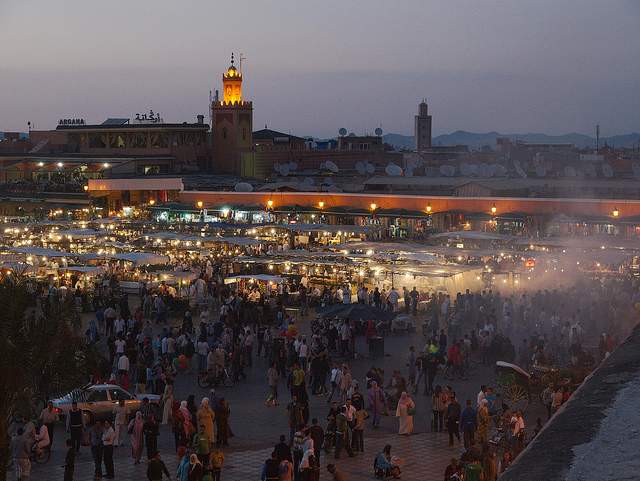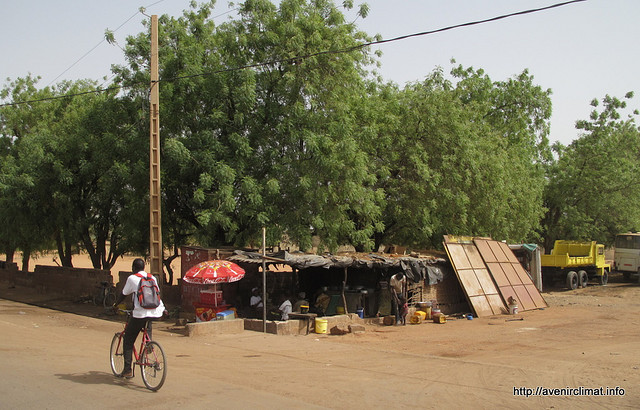Travel publications and travelers themselves love to debate about which are the “hottest” travel destinations this year or in the future, and that led us to wonder what this list would look like if you took out all the subjective stuff and actually concentrated on the destinations where fans of extreme high temperatures and possible spontaneous combustion could go to get their fix.
Here at BootsnAll we scanned the globe a few times to come up with a list of actual major travel destinations where people can expect to feel oven-like conditions at least part of the year, if not the entire year in some cases. There are certainly some slightly hotter pockets on earth, Death Valley, California being one of them, for example, but we wanted to stick to popular destinations rather than oddball curiosities. So below you’ll find our list of the actual World’s 11 Hottest Travel Destinations.
[social]
1 – Bangkok, Thailand
By some measures, Bangkok is actually considered the hottest big city on earth. The average temperature for the entire year is 84°F/29°C, which of course includes the coolest month of December when the average high is 87°F/31°C and the average low is 70°F/21°C. Its location not too far north of the Equator helps explain the oddity of having April and May tie for the hottest months, with average high temperatures of 102°F/39°C. But that makes it seem more pleasant than it really is, because starting in March the face-melting humidity kicks in as well, making morning showers in your hotel room nearly pointless. The extreme conditions are one factor in why this is one of the few countries in Asia where modesty can take a backseat at times so some of the locals can actually wear shorts in public.
>> Look for cheap hotels in Bangkok and find out what to do with 2-3 days in Bangkok
2 – Mecca, Saudi Arabia
If you aren’t a Muslim then Mecca probably isn’t high on your list of tourist destinations, but if you are a Muslim it damn well better be, at least once in your life if you are able. This holiest of all Islamic cities is best known for the suggested pilgrimage called The Hajj, which moves around the calendar, and lately has been during the winter months, fortunately for the 2 million or so who turn up annually. The average high temperature for the entire year is 99°F/37°C, and during June it peaks at 109°F/43°C, making this one of the hottest cities on the planet. At least you can probably leave the umbrella at home alongside your coat, as Mecca receives rain on only an average of 12 days each year.
>> Book flights to Saudi Arabia
3 – Agra, India
Most of India is insanely hot all summer, and much of the country also drowns in humidity that makes things feel infinitely worse, but for pure thermometer-busting readings you’ve got to head to Agra, which many people consider to be something of a nightmare even when the weather is pleasant during winter. Of course, in order to see the Taj Mahal, you’ve got no choice to visit, although doing so in May might be harmful to your health. The average high temperature that month is 107°F/42°C, which makes taking a dip in the Yamuna River just behind the thing sound appealing, in spite of its reputation as one of the most polluted waterways in the world. You could also try splashing around in that big pond you see in every photograph, at least until the security guards hauled you away.
>> Book flights to Agra or find budget accommodation in Agra
4 – Las Vegas, Nevada, USA
Even though Las Vegas lost its title of world’s highest-volume gambling city to Macau, China in 2006, this scorching city in the Mojave Desert is still easily the world’s hottest major gambling destination. The average high temperature in July is 104°F/40°C and triple-digit Fahrenheit temperatures are common all summer long. Hotel prices ease off their spring highs in June and July, and the smaller crowds are treated to some of the world’s most robust air conditioning systems in this city that contains around 20 of the world’s 25 largest hotels. Las Vegas doesn’t sizzle year-round though, and many winter visitors are surprised to discover that the city averages 35 days per year that drop below freezing.
>> Find the best Las Vegas deals and learn about visiting Las Vegas on a budget
5 – Dubai, United Arab Emirates
The thousands of guest workers who are turning this UAE city into a skyscraper jungle faster than anything the world has ever seen before at least don’t have to spend their money on jackets or sweaters.
From June through September the average temperatures are at least 100°F/38°C, and forget about that ‘dry heat’ thing because it’s humid here too. Add in that temperatures here in the Persian Gulf can reach 95°F/35°C in summer and many pools actually need to be cooled to be comfortable, and you wonder how much they can get away charging at that new 7-star hotel during July?
>> Find airfare to Dubai and book Dubai hotels
>> Dubai travel photos
6 – Seville, Spain
It may not be able to compete on an international stage, but Seville deserves note as the hottest of all the major tourist cities in Europe. The capital of the Andalusia region, where almost every building is painted white, has around 700,000 siesta-loving residents, although it’s not clear how many stick around all summer. In both July and August, Seville averages a scorching 95°F/35°C, and it’s prone to wild swings as well. From June through September there have been days of at least 111°F/44°C. in each of those months during the last 20 years, and an all-time high of 122°F/50°C was recorded on August 4, 1881, which is still the highest ever recorded in Europe.
>> Book a Seville hostel and learn about things to do in Seville
7 – Luxor, Egypt
Summer in Cairo isn’t actually as hot as you might think it would be (although it’s still very hot), but summer in the tourist town of Luxor about 420 miles to the south is outrageous. This is home to the Valley of the Kings and is also commonly used as the beginning or ending point of the surprisingly affordable Nile cruises. But visitors to what is sometimes called the “world’s greatest open-air museum” had better be sure to stay hydrated if they are brave enough to visit during the peak months. Almost every day reaches at least 100°F/38°C from May through September, and the hottest temperature ever recorded here was 122°F/50°C, and that was in May.
>> Book flights to Egypt and read our Egypt travel guide
8 – Darwin, Northern Territory, Australia
Most of Australia’s big travel cities have rather pleasant climates, even if the summers do get a bit hot and humid at times. But Darwin, which is located near the Top End of the country, gets the nod as the hottest because it really never gets cool. Its location not too far south of the Equator and also on the Timor Sea keeps it very warm almost every minute of every day. The average high temperature during the “cool” months of June and July is still 87°F/31°C. During the wet months of December through March, the temperatures are only a bit higher on most days, but the stifling humidity around 70% makes it feel a million times worse, according to this handy chart. Darwin is said to be Australia’s most multi-cultural city and one of the few places where you’ll actually see Aboriginals mixing with the ‘newer locals,’ so if you visit bring an open mind and leave your winter coat at home.
>> Find flights to Darwin and learn about things to do in Darwin
9 – Marrakech, Morocco
When you picture Morocco you’d probably imagine that the entire country would be ablaze, or at least feel like it, all summer, but Casablanca, Tangiers, and Rabat are all on the coast, so their peak temperatures are actually reasonably mild. Fez and Marrakech, on the other hand, are inland, and a different story altogether. Marrakech takes the cake between the two, with average high temperatures in July and August being 97°F/36°C, but at least it’s usually bone-dry. The famous open-air market at the edge of the Marrakech medina can still get out of hand though, with a recent July recording hitting 120°F/49°C.
>> Read our Morocco travel guide and book flights to Morocco
10 – Phoenix, Arizona, USA
The Arizona capital in the Sonoran Desert isn’t as internationally well known as Las Vegas, which is about 300 miles northwest, but it’s larger and also hotter almost every day of the year. The average July high temperature of 105°F/41°C doesn’t begin to tell the story in this sprawling city where triple-digit Fahrenheit readings usually start in May and go almost straight through the end of September. Perfect temperatures and blue skies from January through April give way as summer approaches, and the hundreds of golf courses and hotels nearly empty out, leaving behind only locals who usually swear this will be the last summer they spend there, until the next one.
>> Find cheap hotels in Phoenix and find airfare deals to Phoenix
11 – Kayes, Mali
Okay, so this one doesn’t really count as a ‘travel destination’ for most people, but it deserves being mentioned because it’s considered the hottest actual city on earth. January is typically the coolest month, and yet they’ve recorded a day that reached 104°F/40°C here. The average daytime high temperature throughout the year is 95°F/35°C, peaking at 104°F/40°C in April and May. The 100,000 residents mustn’t mind it too much, because it least this is truly a dry heat. That means that when it’s 108°F/42.2°C in the afternoon it might only feel like 107°F/41.7°C, so it’s probably not quite as bad as it sounds after all.
>> Find flights to Mali and read our Mali travel guide
Check out more unusual places around the world:
- 20 World Geography Facts that Might Surprise You
- 6 of the Least Densely Populated Nations in the World
- The Coldest Places on Every Continent
- The Highest Cities in the World
Photos by: Stuck in Customs, Ammar Abd Rabbo, My World..thru my eyes, Nevada Tourism Media Relations, Britrob, J.A. Alcaide, Shelby PDX , marksilva, jc_nyc, Al_HikesAZ, benkamorvan
Thanks to weatherbase.com
